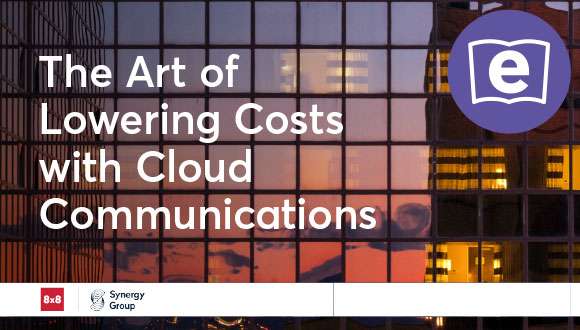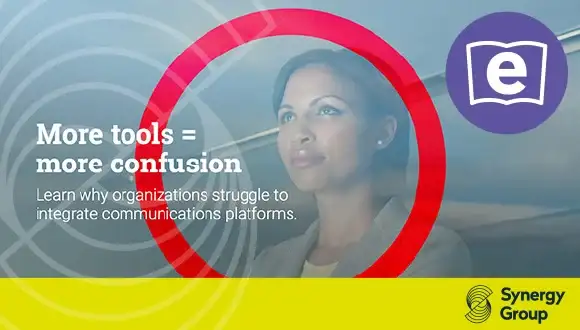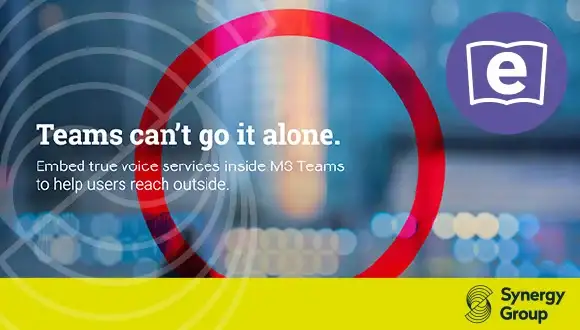The Art of Lowering Costs
with Cloud Communications
The Art of Lowering Costs with Cloud Communications
Ask anyone who’s experienced with creating business cases: “What percent is art vs science?”
Behind closed doors, they’ll confess that a large portion is artistic. To make them squirm further, ask how often they go back and evaluate the accuracy of their business cases. When it comes to creating a business case that estimates the cost savings from moving communications to the cloud, there are five areas that often go undervalued in the analysis.
Including these topics in your evaluation will ensure, if not a scientific, then at least a well thought out artistic point of view:
1. Unify management of all locations
2. Enable transition to “work anywhere” experience
3. Deliver a single security model
4. Integrate with key ICT platforms
5. Improve the customer experience
“There is no difference between science and art when it comes to creativeness, productiveness, to come to conclusions and to formulations.”
Josef Albers

Download The Art of Lowering Costs with Cloud Communications eBook.
Your eBook will download or preview dependant on your browser settings.
1. Unify management of all locations
Businesses often operate multiple communications systems and related applications across several locations. Managing this portfolio consumes a great deal of staff and IT team time as people need to learn, stay current on, use, and maintain these systems. What would the impact be of consolidating all of those applications down to just one that all staff members could use, regardless of their role? Additionally, a SaaS application should not require extensive training before users can be up and using it.
Here are some business case considerations related to deployment, training, and adoption:
- Are new desk phones required or can existing models be used? – Can the DECT systems be integrated into the cloud platform?
- Are softphones with a mobile app eliminating the need for physical phones?
- Can staff safely and securely use their personal mobile devices?
- How much time needs to be invested into onboarding a user to the point of adoption?
- What’s the expected impact on the IT help desk to roll out the new cloud communications apps?
- Would a single application to deploy, train, use, and maintain reduce the demands on IT staff?
- Would having one application that included all communications channels increase staff productivity?
- What would be the impact to monthly outlays by consolidating all of those subscription costs down to just one plan?
2. Enable transition to “work anywhere” experience
A hybrid working model can be a little more challenging for some industries than others. Let’s take manufacturing, for example, in which the majority of roles need to be on-site. These organizations should look for solutions that work on any device with a consistent experience across softphone, PC/Mac, iOS, and Android mobile applications, and IP handsets for “ward” phone use cases. These applications must also be able to both work over secure internet, public internet, home broadband, 3G, 4G, and 5G, as well as make use of GSM mobile minutes for staff working in rural areas.
Assessments should include the following:
- What is the impact of adding cloud communications to the network? Will this over-the-top (OTT) service require additional network capacity?
- What’s the current video meetings solution and does it enable staff to quickly engage with colleagues, suppliers, and customers? Can they do so spontaneously?
- What messaging capabilities are in place today to support digital channels, and how can using them deliver better customer experiences?
- Can all staff work remotely, if needed, using their personal devices, yet always present their professional phone number? What impact would that have on staff productivity?
- How are communications for common areas handled today?
- What level of international calling is needed for each role?
- How long will you need to run both systems in parallel to enable a smooth transition? What are those “overlap” costs?
3. Deliver a single security model
Cloud communications platform providers must be able to evidence Tier 1 data centers (more than one) where geographically redundant data traffic routing is used to provide at least 99.999% uptime as part of a contractual SLA for both business communications and contact center. Call quality SLA’s should also be provided at a MOS level of 3.0 or greater. Of course, GDPR, ISO 27001/9001, and Cyber Essentials+ accreditations must be in place to ensure that local government regulations around data privacy and security are met.
- What’s the cost of having to conduct multiple security audits to cover different applications?
- Does managing the security and compliance of a single provider deliver cost savings vs managing multiple suppliers?
4. Integrate with key ICT platforms
Many organizations effectively leveraged Microsoft 365 and Microsoft Teams to quickly adjust to remote working, which has kept staff safe. Companies using Teams also need additional capabilities to enable collaboration with external parties, such as suppliers and service provider partners. Switchboard, contact center, and external digital communication channels, such as SMS and chat apps, must be able to integrate with Microsoft Teams to ensure that it remains at the center of collaboration. Note that all integrations are not equal. Using a true cloud-to-cloud integration with Microsoft should be favored over more basic direct routing, where traditional SIP trunking and potentially on-premises SBC’s would be required.
- What are your licensing costs to provide voice services for Microsoft Teams users?
- What are the cost implications of being able to use a Microsoft Teams certified integration partner?
- Would a platform with the ability to include both business communications and contact center in a single integration save time and money from the outset and over time?
5. Improve the customer experience
Improving the customer experience starts with the assumption that you understand what the experience is today. Do you have visibility into all the communication touch points, as well as the customer experience at each one? Are you able to quantify the impact of improving the experience? The research consistently shows that improving the experience has a positive impact—but by how much? This is where the details underpinning the business case can get fuzzy.
Here are a few questions to consider when thinking through this topic:
- Would providing switchboard and contact center agents with instant visibility into a complete staff directory increase call handling capacity and reduce wait times without adding more staff?
- Does having customer sentiment analysis across all the contact center calls enhance the experience and lower costs by focusing resources on those topics that deliver outcomes most relevant to customers?
- What value does the ability to instantly produce reports showing results for key metrics have on IT resource utilization?
- How does the ability to provide specific and relevant coaching to agents using annotated recordings from their calls impact customer satisfaction scores?
- Would analytics and reporting that support balancing resources with activity levels drive efficiency gains, cost improvements, and enhanced customer experiences?
- What is the impact of automating high volume, routine calls?
Conclusion
Many of the questions in these topic areas are often left out or not given sufficient attention when organizations are evaluating a move to cloud communications. The result is a business case that only looks at infrastructure and related costs.
There are also additional topics that may be relevant, depending on your company’s ICT maturity:
- Activity and Service Level Agreement implications
- Physical handset rationalization
- Environmental impact
Going through the thought process ensures that you’ll produce a comprehensive evaluation of your current communications situation. It will give you confidence that, regardless of the specific number, the business case decision has a solid analytical, albeit somewhat artistic, foundation. 8×8 will partner with you and leverage our experience and expertise gained from working with other manufacturers to create the appropriate evaluation and business case.
Your Technology Partner
Call us today on
020 3551 7773
Your Technology Partner
Call us today on 020 3551 7773



















